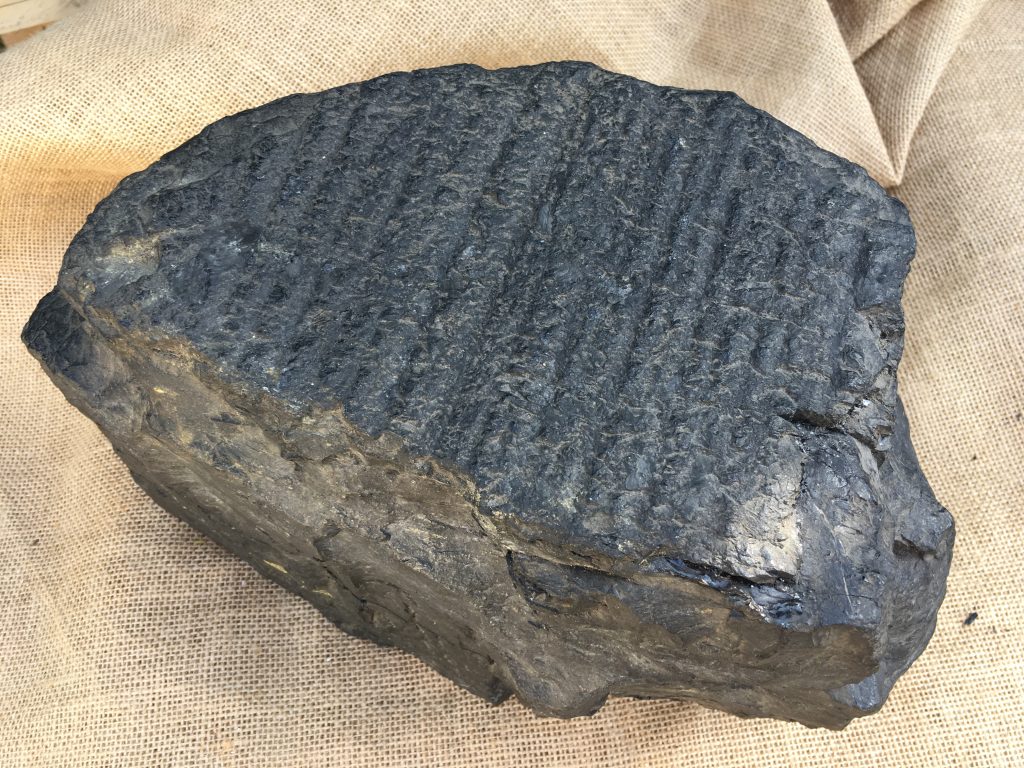I found my first fossil when I was ten years old, a gastropod embedded in a piece of Carboniferous limestone. This marked the beginning of my collecting, so it would be remiss of me, even disrespectful, if I were not to highlight this wonderfully interesting sedimentary rock. Around 340 million years ago a sub-tropical sea existed which supported a myriad of marine life including corals, molluscs and sea-lilies. Layers of calcium-rich sediment were accumulating on the seabed and as the corals and other creatures died their remains became incorporated in it. Over millions of years these sediments were transformed into layers of solid rock that we now call limestone and the shells and other hard parts of the marine organisms were preserved as fossils. It makes up around 60% of Ireland’s bedrock.

Limestone can sometimes be fossiliferous, meaning rich in fossils. These provide us with valuable information about the complex prehistoric marine ecosystem. Corals are a fascinating group of small invertebrates. Each of these soft-bodied animals, known as a coral polyp, secretes calcium carbonate or lime from which it constructs a hard protective exoskeleton. Coming together in large numbers they create individual colonies and when these coalesce form coral reefs. A specimen of a solitary coral still stands upright as it had in life 340 million years ago on the bed of the Carboniferous Period sea.

Although superficially resembling bivalves, brachiopods are a separate group of shellfish. They first appeared in the Cambrian Period some 540 million years ago and at various times in the geological past were extremely common. The lower and larger of its two shells had a round opening at the posterior tip through which a fleshy pedicle or stalk protruded. The animal used this to attach itself to the seabed. Around 200 species are still found today. Perfectly preserved fossil brachiopods sometimes just pop out of the limestone when lumps are broken open, as was the case with the specimen here.
Calcite is the crystalline or pure form of calcium carbonate, the main constituent mineral of limestone. It occurs as veins within the rock, sometimes in large enough concentrations to justify commercial mining.


When rain falls it absorbs carbon dioxide gas from the air and forms a weak carbonic acid which chemically reacts with the limestone, slowly dissolving the calcium. Filtering down through the body of the rock, the water becomes saturated with this mineral. On contact with air when it seeps into an underground passageway or cave, some of the carbon dioxide is released. As a result of this, each drop of water that forms on the roof deposits minute crystals of calcite and over time a downward tapering feature known as a stalactite develops. Where drops splash consistently on the same spot of the floor a stumpy upward growing stalagmite forms.
Another mineral sometimes found in Carboniferous limestone is fluorspar. Also known by the name ‘Blue John’, it was mined at one time in the Burren, Co. Clare. It was used as a flux in the production of iron and was a main ingredient in the manufacture of hydrofluoric acid which among other things, was used for etching glass.


Piddocks are a group of marine bivalves who bore into rock. Tell-tale signs of their presence are small circular holes peppering the surface of the rock or the larger chambers that they excavate by rasping with the sharp edges of the shells. Each piddock is condemned to serving a life-sentence, incarcerated in its self-made stone-walled cell. The wrinkled rock borer or red nose (Hiatella rugosa) bores a flask-shaped chamber and these are a common find in rocks along the shore in areas of limestone.
Best,
Vincent
© Vincent Butler Heritage 2020






